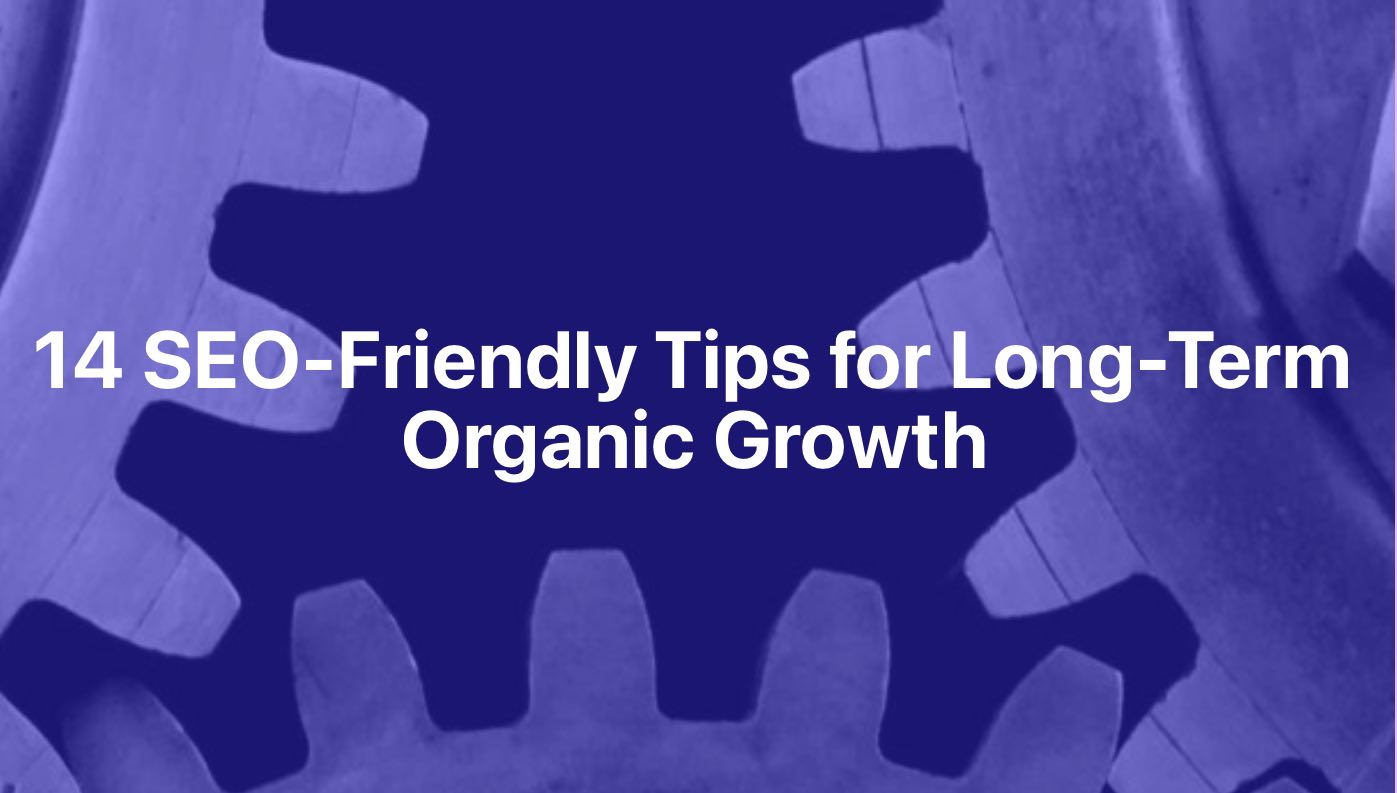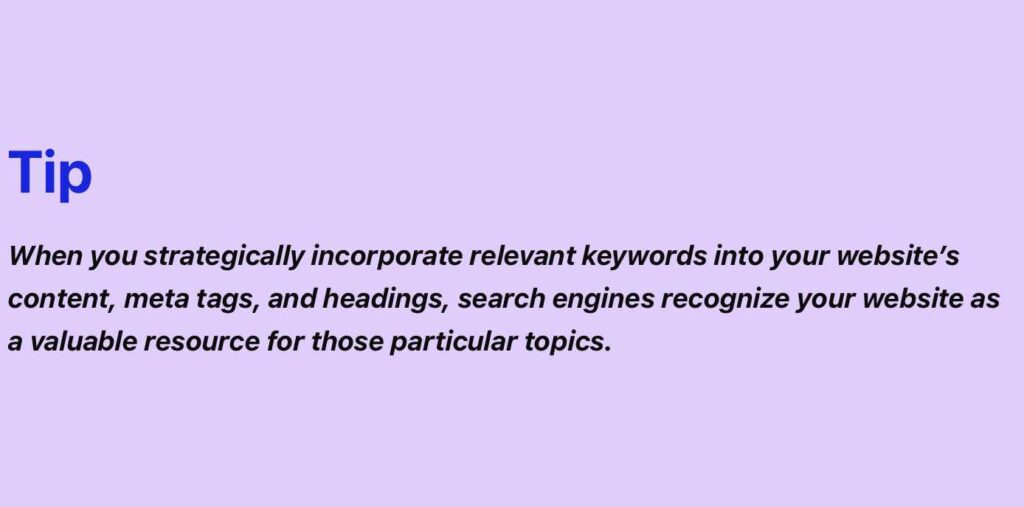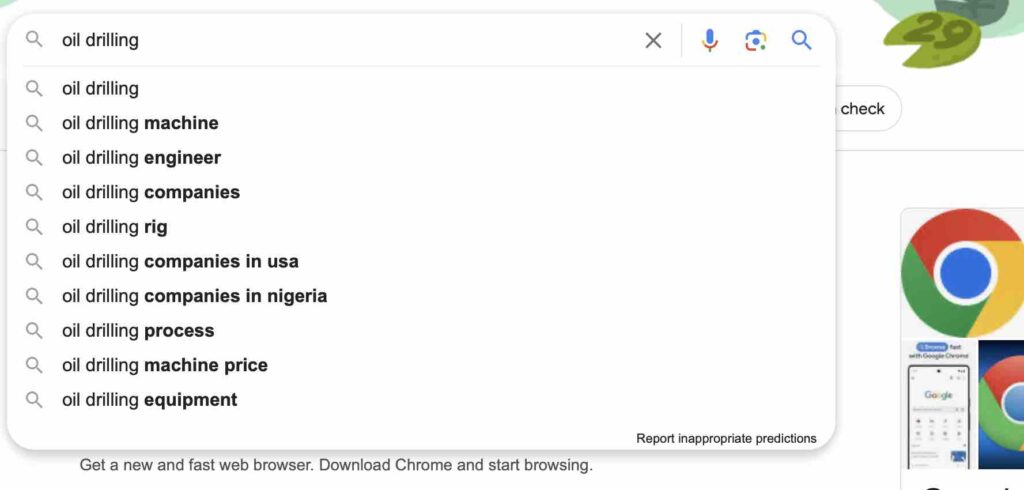SEO-Friendly Tips: An Introduction
When you build a website or write content and post it on the internet, you do so for two main purposes; namely, for human consumption and for search engines to discover the content and move it up the ladder of discovery, known as search engine result pages (SERPs).
You should always adopt a human-first approach when you create content or design a website. Your primary purpose for content creation should always be for human consumption that arise from queries entered incomputer search-bars on the internet. However, humans can only consume what they are able to find from the queries they enter in the search bar. For this reason, you need SEO-friendly tips to achieve the purpose of ranking high on SERPs.

This article will delve into 14 SEO-friendly tips that should help you rank high on search engine result pages (SERPs). The tips will range from understanding keywords and your target audience, creating high quality content that resonates with your target audience, strategies for link-building, On-Page SEO optimization, technical SEO, social media integration to voice search optimization and much more.
II. Understanding Keywords and Target Audience

A. Researching Relevant Keywords
The power of keywords:
At the center of every SEO-friendly tip lay keywords and keyword phrases used in search queries. Therefore, it is very important to thoroughly brainstorm your niche market’s keywords and keyword phrases in other to identify relevant and high-performing keywords and related phrases. This will help you gain valuable insights into what keywords and phrases that your prospective audience are utilizing in their search queries.
Why is researching relevant keywords important?
To search for or to research and find your products or services, your target audience type into the search bar of their devices certain keywords or keyword phrase as search queries.
The search intention of your audience will depend on what stage of the buyer journey they are in.
- If they are searching for information ovens, their search queries might look like this: “What are the types of ovens available in Walmart?”, “How do ovens work?”, “Oven basics” and so on.
- If they are interested in a specific type of ovens, they key in these types of search queries: “Samsung oven review.”, “Whirlpool oven specifications”, “Best ovens from Samsung”, and so on.
- If they are troubleshooting, they may type in “Common oven problems”’ “How to fix oven not heating”, “Oven error codes”.
- If they are interested in oven maintenance, they may type in any of these search queries: “How to clean ovens.”, “Oven maintenance tips”, “Best practices for oven care.”
When using search engine, your target audience may type in keywords alone or keyword phrases. They might combine of the keyword phrases as a search query. This is why researching your market niche relevant keywords is the foundational first steps that you must execute for an effective SEO strategy.
How to conduct keyword research:
To effectively conduct relevant keyword search, we shall outline a 2-step organic SEO traffic technique you should take in performing keyword research:
- Step 1: Brainstorm on the buying intent of your target audience. Where along the buying journey are they? Is it information they seek? Is it brand comparison?
- Step 2: Find relevant keywords and keyword phrase ideas using effective tools like Google Keyword Planner, SEMrush, Ahrefs, Answer the Public, etc to identify relevant keywords in terms of types, volume and keyword difficulty. Pay close attention to long-tail keywords with lower competition.
Effective Tools for Relevant Keyword Search
There are a number of effective ways and tools for conducting keyword research. We shall delve into a few of the top methods:
Brainstorming for Effective Keywords:

If you are a veteran in your niche market, list a number of keywords and keyword phrases your customers use in describing their pain points. Read published articles and blogs about your products or services.
Have you attended a tradeshow in the past? Try remembering words and phrases used by participants.
Use Google Chrome for keywords and keyword phrase generation. This is an effective technique. If you were in the oil drilling business for instance, try typing in “Oil drilling” and list the keywords and keyword phrases Google Chrome generates for you.
Keyword Planning Tools:
For your SEO-friendly strategies, there are many effective Keyword Planning tools you can also utilize to boost the organic visibility of your website in your industry.
These tools with proven methods for achieving long-term organic growth include but are not limited to Google Keyword Planner, Ahrefs, and SEMrush.
Google Keyword Planner has the following 4 benefits:
- Relevant keyword suggestion: using its actual data base, Google Keyword Planner will supply a large and very relevant keywords on subjects of your search queries. These keywords can be use for optimizing your organic growth.
- Keyword Search Volume: using your search queries, this Google Keyword Planner can help you drive sustainable traffic and growth with SEO optimization to your website. This tool will supply you with the average search volume per keyword per month for as long as 12 months. The tool will also rank the keyword difficulty for you.
- Competition: the level of difficulty of a keyword depends on the level on competition for that keyword. By know the competition level for a keyword, you can determine whether or not the cost-per-click (CPC) for that keyword is within your budget (for paid ads) and whether you content can rank high based on the strength of your content if you use such keywords for organic traffic. We suggest that you avoid highly competitive keywords except you are certain that you have a history of high ranking in organic SERPs
- Historical data: google Keyword Planner will also provide you with historical data for a keyword for up to the last 12 months. This feature will show you the seasonal trends of the keywords. This is a valuable information for planning your long-term organic traffic growth.
(Insert Ahrefs Image – plus content write-up)
(Insert SEMrush Image – plus a small write-up)
III. On-Page SEO Optimization
A. Title Tags and Meta Descriptions
Optimising title page is an an SEO-friendly tip. Title tag is the clickable headline that appears as the first line or title line of your webpage in SERPs listing. Title page font is blue before clicking and pinkish after clicking.
Your title page is the most important real estate of your webpage. It is the first element of your content that your prospective visitors will read. It should therefore be enticing and should also contain your target keyword or key selling point. It should be concise with a character length of 30 to 60.
Note: Avoid click baiting as this will increase your site’s bounce rate and will lower your ranking in SERPs.
Another SEO-friendly tip is your Your meta description. Your meta description is the one or more non-clickable sentences directly below your title page.
Your meta description should normally be between 130 to 140 character in length. It should contain the key issues that your page is addressing. It should also contain your unique selling proposition (USP) and target keywords.
Optimizing both the title tag and meta description play important roles in improving your click-through-rate (CTR), getting you more organic traffic and improving your organic ranking in SERPs.
B. Using URL Structure for Boosting Organic Ranking
A well-structured URL not only helps search engines understand the content of a webpage but also improves user experience and click-through rates.
When optimizing URL structure for SEO, aim for URLs that are descriptive, concise, and easy to read.
Include relevant keywords in the URL, preferably towards the beginning, to signal the page’s topic to search engines and users.
Avoid using unnecessary parameters, numbers, or symbols in URLs, as these can confuse search engines and detract from readability.
Instead, use hyphens to separate words and keep URLs clean and user-friendly.
Additionally, ensure that URLs are static and don’t change frequently to maintain consistency and avoid broken links.
C. Header Tags (H1, H2, etc.)
Header tags are used for the structural organization of blog contents or webpages. They play an important role in crafting an SEO-friendly write-up. They should follow a logical sequence from H1 to H2 to H3 and so on.
The H1 header tag is one of the main SEO-friendly tips for optimizing your content for organic growth.
As an SEO-friendly tip, the H1 header tag should always serve as the headline tag for your blog post. It is an effective SEO method for drawing attention to your article because it has a very strong drawing power that can make your audience click on your post.
The H1 header tag should contain your focus keyword or target keyword and your unique selling proposition.
Every head tag, should serve as a window into the content of that section. It should give readers a clear glimpse of what to expect when they delve deeper into the content of the section.
Use a logical sequence of header tags to a proven method for achieving long-term organic growth of your website and webpages. Incorporate relevant keywords as an effective technique for sustainable growth. The structural connection between a hear tag and the content of its section should aid readability and serve as an SEO tactics for steady organic growth.
D. Keyword Placement and Density
Strategically incorporating relevant keywords in header tags, meta descriptions, and article content is a key SEO-friendly tip that can help you in optimizing for organic growth.
It is very important that the placement of keywords be done in such a way that does not disrupt the natural flow of your content and even you header tags. It is recommended that the ratio of sentences to keywords should range between 1.0 and 1.50 in density.
Keyword stuffing is unnatural and it tends to disrupt the natural flow of content and search engines will exert retribution in your organic ranking in SERPs.
Your primary focus should always be to create content for human consumption. In this respect, the contents you create should be of high quality and very relevant to the search intend of your audience.
E. Image Optimization
There are many benefits for implementing Image SEO tips as part of your overall SEO-friendly tips. Two key benefits include high ranking in Google Image search.
Avoid the negative consequences of unoptimized images in Google Image search like slow image load speed that may downgrade your ranking on SERPs.
There are a number of SEO-friendly tips that you can implement that will help your visitors user experience and Google ranking. They include but are not limited to using the right image formats.
Technically, Google supports these image formats: BMP, GIF, JPEG, PNG, WebP, and SVG. However, an incorrect image format can affect user experience of your site visitors.
Images vary in sizes. For instance, these are some of the common image sizes:
- JPG = 2.66 MG
- PNG = 51.2 MG
- WebP = 1.25 MG.
So as you can see, image sizes wildly vary and the wrong image size can have negative effect on your website.
As a common rule, as an SEO-friendly tip, implement the following guidelines:
- Logos and Illustrations = use SVG images
- Photographs = use JPG or WebP images, and
- Animations = use GIF or GebP images, and for
- Images with transparencies = use PNG or WebP images
Note:
Image resolutions affects the performance of your site. For this reason, use image compression software for your website images.
Some image compression software can reduce the size of your images by as much as 50 to 60 percent without compromising the number of pixels on the images.
Steps That Will Help Google Understand the Images on Your Website:
- Use relevant images. For instance, do not use an image of a cat for a content about pizza.
- Use original images: As much as possible, use original images
- Strategic Image Placements: Place images strategically close to the contents that refers to them. Preferably, place images at the beginning of a relevant content.
- Create quality contents as this will complement the use of relevant images in your SEO ranking.
- Create image sitemaps: use the right plugins like Yoast ot Rank Maths that have sitemaps functionalities in-built.
- Responsive images: there are images that adjust to the size of a device screen. WordPress has in-built functionalities for flexible and adaptable image responsiveness.
- Use descriptive metadata: In your header (H1) title and other headers, in captions, image titles, the more information you can provide Google, the better for your SEO ranking.
- Use descriptive word Alt Text, titles, captions, and descriptions.
- Use descriptive Alt tags, and
- Use the right type of schema.
IV. Using High-Quality Content Creation for Boosting Organic Ranking
“Good copy can’t be written with tongue in cheek, written just for a living. You’ve got to believe in the product.” – David Ogilvy
creating high-quality content is the 4th of the 14th SEO-friendly tips covered in this article.
The content you create should engage the interest of your audience and address their pain points.
You should strategically embed target keywords in your content. the keywords you embed should naturally flow with your content.
Avoid keyword-stuffing as this could harm your website ranking. Use multimedia elements like static pictures, videos and infographics for increasing organic visibility
Regularly refresh your contents by updating them for continuous relevance.
A. Importance of Creating Valuable and Engaging Content
(Insert the image of US Dollar)
The importance of increasing your organic visibility for long-term organic growth with SEO-friendly tips and tactics cannot be overemphasized.
The theme of this section is on creating valuable and engaging content both for human consumption and for SEO ranking.
Content as they say is king; it is the currency of that powers digital marketing.
Let us look at it this way: metaphorically speaking, traffic is the engine that drives your website to the top of SERPs ranking.
But that traffic (engine of SEO) needs fuel to run on.
In this respect, content acts as the fuel that will drive organic traffic to your site.
High quality, valuable and engaging content is like premium fuel or unleaded fuel for the smooth acceleration of our website to high organic ranking.
Search engines gives preference to contents that are interesting, engaging, and that addresses user-intent by being very relevant to the purpose of your visitors’ of visiting your site.
Remember that at all times, quality trumps quantity. So focus on quality content.
B. Incorporating Keywords Naturally
It is vitally important that you create content for human consumption rather than for SEO ranking.
An important SEO-friendly tip is to incorporate your focus keywords in your title tags, headers (H2, H3, etc) meta descriptions, and the body of the content that you create.
Like we previously cautioned, avoid keyword stuff. This is the tactics of excessively stuffing or cramming keywords in the content you create.
Keyword-stuffing might attract penalty from Google and moreover, they hinder the natural flow of your content.
A nature ratio of keywords to sentences should range between 1.00 to 1.50
C. Using Multimedia Elements (Images, Videos, Infographics)
There are several studies that say that humans;
- Retain 10 percent of what they read.
- 20 percent of what they hear.
- 30 percent of what they see.
- 50 percent of what they see and hear, and
- 70 percent of what they say and write.
Therefore optimize for organic growth the use of multimedia elements like images, videos, and infographics.
Use virtual elements to break the monotony of your text and this will also enhance the readability of your content. Use about five static images.
Use Alternative Text (alt text) descriptions for all images embedded your content. This is because in situations that your image fails to display, the Alt Text image will explain or describe the intent and context of the image. Moreover, Google rewards the use of alt text.
Use high-quality, relevant and optimized images to help in boosting organic ranking of your site.
V. Mobile-Friendly and User-Experience Optimisation
A. Importance of Mobile Responsiveness
Improving your mobile responsiveness is a key factor in increasing organic growth of your website. This is because in today’s mobile-centric world, over 60 percent of all searches are conducted using mobile devices like tablets and smartphones.
The incorporation of responsive design in your website is one of the key SEO strategies for boosting organic traffic to your website. A mobile-friendly website will automatically adjust to the screen size of all devices.
When your website is able to adjust content, images, videos and infographics are able adjust seamlessly to the screen sizes of different devices, whether large or small, your site visitors are able to linger longer on your website, the user experience of your site visitors is enhanced. This will translate to longer dwell time on your site and will most likely result in your visitor performing the action you desire, whether to make a purchase, fill a form, register for a podcast, etc.
Search engines like Google reward long dwell time with higher ranking on SERPs.
B. Optimising Website Speed as Another SEO Strategy
Website speed is a crucial factor in both user experience and search engine rankings.
Research has shown that users are less likely to engage with websites that load slowly, leading to higher bounce rates and decreased conversions.
Additionally, search engines like Google consider page speed as a ranking factor, with faster-loading websites often receiving preferential treatment in search results.
To optimize website speed, start by minimizing HTTP requests, optimizing images, and leveraging browser caching.
Compressing files, minimizing redirects, and using a content delivery network (CDN) can further improve loading times.
Regularly monitor your website’s performance using tools like Google PageSpeed Insights or GTmetrix, and make necessary adjustments to ensure optimal speed and performance.



